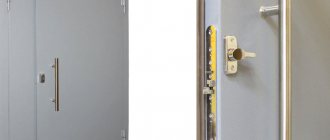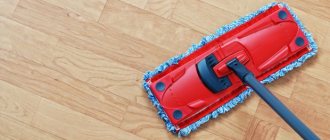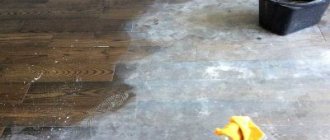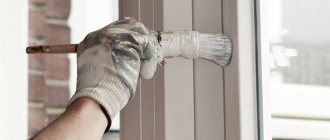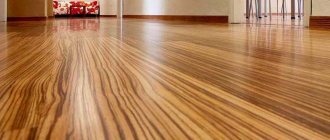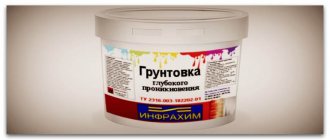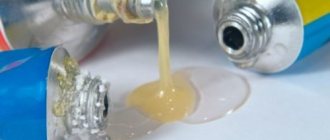How to remove primer stains from linoleum?
A product that does not contain soda or alkali is suitable for cleaning. Solvents "White spirit" and "646" are the best option. In order to get rid of the remnants of the dried suspension, you should apply the cleaning agent to a cotton pad and wipe the surface. Repeat the procedure until completely cleansed.
Interesting materials:
How to use the iron's self-cleaning system? How to change the background on a photo? How to change a photo in Photoshop? How to change the game language in Epic Games? How to change the keyboard language on Honor? How to change the language on the keyboard of a Huawei tablet? How to change the interior of a room without renovation? How to change the keyboard on Xiaomi Redmi 4x? How to change the number of cores? How to change the tape in the payment terminal?
Methods for cleaning laminate flooring from glue
Once the glue has hardened, it will no longer be possible to remove it with either paper or a plastic knife. More “serious” methods are needed.
Mechanical removal
It’s definitely not worth rubbing laminate flooring with a kitchen brush, brush, or sandpaper. This will be of little use. Even if you manage to clean off the hardened glue, the decorative layer of the coating will be damaged by scratches, which are always very noticeable.
It is customary to remove only small drops mechanically. There are subtleties here:
- You shouldn’t pick off a drop from the floor - it’s better to sand it carefully;
- Emery is good for sanding (a small piece so as not to touch the clean laminate around a drop of glue);
- there is no point in wiping off the entire stain - the glue is transparent, and the remnants of the rubbed drop on the floor are invisible.
Household chemicals
The following household chemicals can deal with dried stains:
- acetone (very aggressive - it is better to first check the reaction on an inconspicuous area of the laminate);
- window cleaners (based on ammonia, but do not harm the laminate as much as pure ammonia);
- any chemicals containing solvents;
- a special anti-adhesive preparation (more about it below).
Chemicals should be applied carefully, in small doses. It is better to use a cotton pad or small rag for application. You shouldn’t just pour and spray the product on the laminate - there is a risk of damaging the smooth surface.
Alcohol
Glue stains can be safely wiped until completely removed:
- alcohol wipes;
- cotton wool soaked in pure ethyl alcohol;
- vodka.
It is not advisable to use ammonia and formic alcohols - they can damage the laminate. It is worth refraining from cleaning with denatured alcohol. And isopropyl alcohol is simply ineffective.
Soda
A universal remedy for cleaning any stains is a paste of soda and water:
- Mix soda and cold water in approximately equal quantities. It should come out like a paste, but if the mixture turns out to be more liquid, that’s not a problem.
- Spread a continuous layer onto the adhesive stain. Do not rub so as not to scratch the laminate.
- Leave for 2-3 hours.
- Wipe off the baking soda with a dry paper towel. Along with it, a significant part of the glue will be wiped off, and the remains can be easily washed off with clean water.
This method is recommended for old laminate flooring, which can be easily damaged by more aggressive means. Nothing will happen to him from soda.
Table vinegar
9% vinegar can be poured onto the floor without fear - it will corrode the glue, but will not ruin the laminate. And more concentrated solutions (especially pure essence) should be carefully applied with a cotton pad. It will take vinegar at least 30-40 minutes to soften the stain, but then the glue can be easily wiped off with a napkin.
Oil
Oil behaves differently than other products - it does not soften the stain, but penetrates under it. The adhesive remains firm but comes off easily from the laminate. It is permissible to apply and leave the oil on the coating for any time - even overnight. Nothing will happen to the laminate, because it does not absorb fat.
The following oils work well:
- vegetable (sunflower, olive);
- cosmetic;
- petrolatum.
Anticlean
A very powerful tool is a debonder. Russian manufacturers call it anti-glue.
Effective debonders come out under the following brands:
- "Super Moment";
- "Second";
- “Strength” (this brand has a tube of debonder sold along with a tube of superglue).
The product is applied to the dried glue and left until it softens, becoming like a paste. “Melted” glue can be easily removed with a toothpick and a cotton swab. After treatment, the coating area should be wiped with a detergent - for laminate or universal.
Hairdryer
You can also soften the glue by applying temperature. A hairdryer with warm air is brought to the stain and held close (but not pressing) until the stain becomes softer. This will take from 5 to 20 minutes - depending on the age of the contamination and the composition of the glue. Then they just wipe it off.
In addition to the hair dryer, the following are suitable:
- iron (but do not press it to the laminate);
- steam generator.
Nail polish remover
A liquid containing butyl acetate will work well on glue stains. Products without this component are almost useless. Use it like this:
- Soak a small piece of soft cloth with the liquid.
- Rub the dirt with a cloth.
- Leave for 5 minutes.
- Rub again. When removing dried glue, you will have to repeat the steps several times.
- Wash off with soapy water to get rid of the pungent odor.
Hydrogen peroxide
Peroxide releases active oxygen and corrodes dried glue:
- Impregnate a piece of white fabric with the substance (bright dyes can “transfer” to the laminate).
- Rub the stain with peroxide.
- If the contamination is large, cover with the same cloth and leave for 5 minutes.
- Wipe off the softened glue.
- Immediately wash off traces of peroxide from the laminate so as not to damage the smooth surface of the coating.
The procedure can be repeated several times. The main thing is to avoid continuous contact of peroxide with the floor covering for more than 5 minutes.
White Spirit
The only solvent that can come into contact with laminate. Others are too aggressive to the film on the laminate surface. Use white spirit in the same way as peroxide, in the same order. Instead of 5 minutes, you can leave it for 10-15, but no longer.
How to clean the floor until it shines
A mop with a sponge and soft, easy-to-wring-out rags for cleaning the floor will help to clean the laminate flooring thoroughly. The water should be warm, with the addition of a special product for laminate flooring.
To wash the floor covering to a shine, without streaks, proceed as follows: the first time, wash the surface with water and a special product, the second time - with clean water, often rinsing and squeezing the sponge or rag well. Make sure that moisture does not accumulate or remain on the floor.
To ensure a clean floor retains its shine, do not walk on it barefoot - otherwise marks will remain on the surface. Use house shoes with soft soles.
What not to do
The laminate coating itself is quite durable, but it should be handled with care so as not to damage the top decorative layer. Therefore, it is better to avoid certain actions in order to preserve the beautiful appearance of the floor covering. You should avoid the following:
- use of alkali-containing and acid-containing detergents;
- use of powders with abrasive particles;
- do not use sharp objects when cleaning various contaminants;
- excessive moisture during cleaning.
What not to do
1. Aggressive chemicals damage the surface of the laminate and leave stains on it. Before removing dirt with a strong product, check in an inconspicuous place to see if it will damage the color and structure of the laminated surface. Contraindicated substances include:
- ammonia (and all products based on it), which corrodes the laminated layer;
- acids;
- alkalis;
- chlorine-containing products.
2. Abrasive cleaning agents mechanically damage the protective layer of the laminate; cleaning powders and gels with abrasive additives should be discarded. Before washing the floor, remove abrasive contaminants (sand, small stones) with a brush or vacuum cleaner.
3. Products for polishing parquet and other coatings (mastic, silicone) are not suitable for laminate flooring; they spoil the structure of the decorative protective layer.
4. Water and water vapor have a detrimental effect on the flooring material, penetrating into the joints between the panels, therefore the use of washing vacuum cleaners and steam cleaners is strictly regulated.
5. Move furniture on a laminate flooring should be done very carefully; it is advisable to place scraps of felt or felt, cardboard under the legs, use special stickers with a protective layer.
Medicine from the first aid kit
Among other things, you can look in your home medicine cabinet, where you can find ethyl alcohol, which, like isopropyl alcohol, can completely help remove glue. This method is not particularly effective, but it will not damage the surface.
It will be much more effective to buy dimethyl sulfoxide (Dimexide) at the nearest pharmacy; it does an excellent job of removing glue stains, an excellent option if you use gloves, otherwise irritation of the epithelium may occur.
Washing vacuum cleaners and steam cleaners
Let's consider whether it is possible to use convenient modern equipment - steam cleaners and washing vacuum cleaners - to care for a laminate floor.
The washing vacuum cleaner sprays water and detergent over the surface, after which it sucks it back along with the dirt. During the cleaning process with the unit, moisture remains on the floor covering for some time and has a chance to penetrate between the joints of the planks, which will lead to swelling of the flooring.
For this reason, it is not recommended to clean laminate flooring with a washing vacuum cleaner, especially if we are talking about material up to 6 mm thick. But it is possible to wash laminate flooring using the latest generation units, with economical consumption of washing liquid.
In this case, a relatively small amount of moisture will reach the floor surface, and a special nozzle will wipe it almost dry. Such washing vacuum cleaners are characterized by increased suction power.
Cleaning with a steam cleaner is not recommended for the same reason - hot steam penetrates the joints, which leads to swelling and heaving of the coating. A steam cleaner can be used to clean a laminate floor if the covering is installed using glue.
In this case, the napkin for the unit is folded in half and steam is supplied not constantly, but intermittently. This will get rid of dirt without causing damage to the laminate.
conclusions
From all of the above, we can conclude that all problems with contamination of laminate flooring can be solved, but it is still better to prevent their occurrence. Therefore, before starting repairs, you should try to cover the floor surface as much as possible. In addition, it is worth taking care of purchasing cleaning products in advance to keep them on hand. Then you most likely won’t have to deal with the consequences of the repair.
And it is also important to remember that in order to have fewer problems with removing contaminants, you should try to catch the moment and wash the laminate while the apartment is still being renovated, because the fresher the contaminants, the easier they are to remove.
How did you wash away dirt after repairs?
Special equipment
Most chemical solvents are quite aggressive and toxic, so always use eye and respiratory protection when working with them; in addition, the room must be well ventilated, this is important!!!
You might be interested in reading the article “How to remove superglue from your fingers.” Read here...
Let's look at each solvent in more detail from best to worst:
- debonders - a professional product based on nitromethane, the best product for removing super glue, inexpensive and widespread;
- polypropylene carbonate - perfectly dissolves cyanoacrylate, but it is highly toxic, which makes it very dangerous, especially when used indoors. If you are not an experienced chemist, it is better to bypass it; there are more gentle ways;
- acetone is moderately toxic, you need to be careful; it is very aggressive and can damage the surface, as it interacts with almost all types of dyes; in the case of laminate, it can lead to fading of the surface;
- isopropyl alcohol is non-toxic, but also ineffective, since it dissolves only the upper surface of the adhesive stain, so it will have to be scraped off, which in fact is time-consuming and labor-intensive;
- white spirit, gasoline, kerosene - have similar properties, are quite toxic and fire hazardous, removing cyanoacrylates with their help will be long and difficult.


